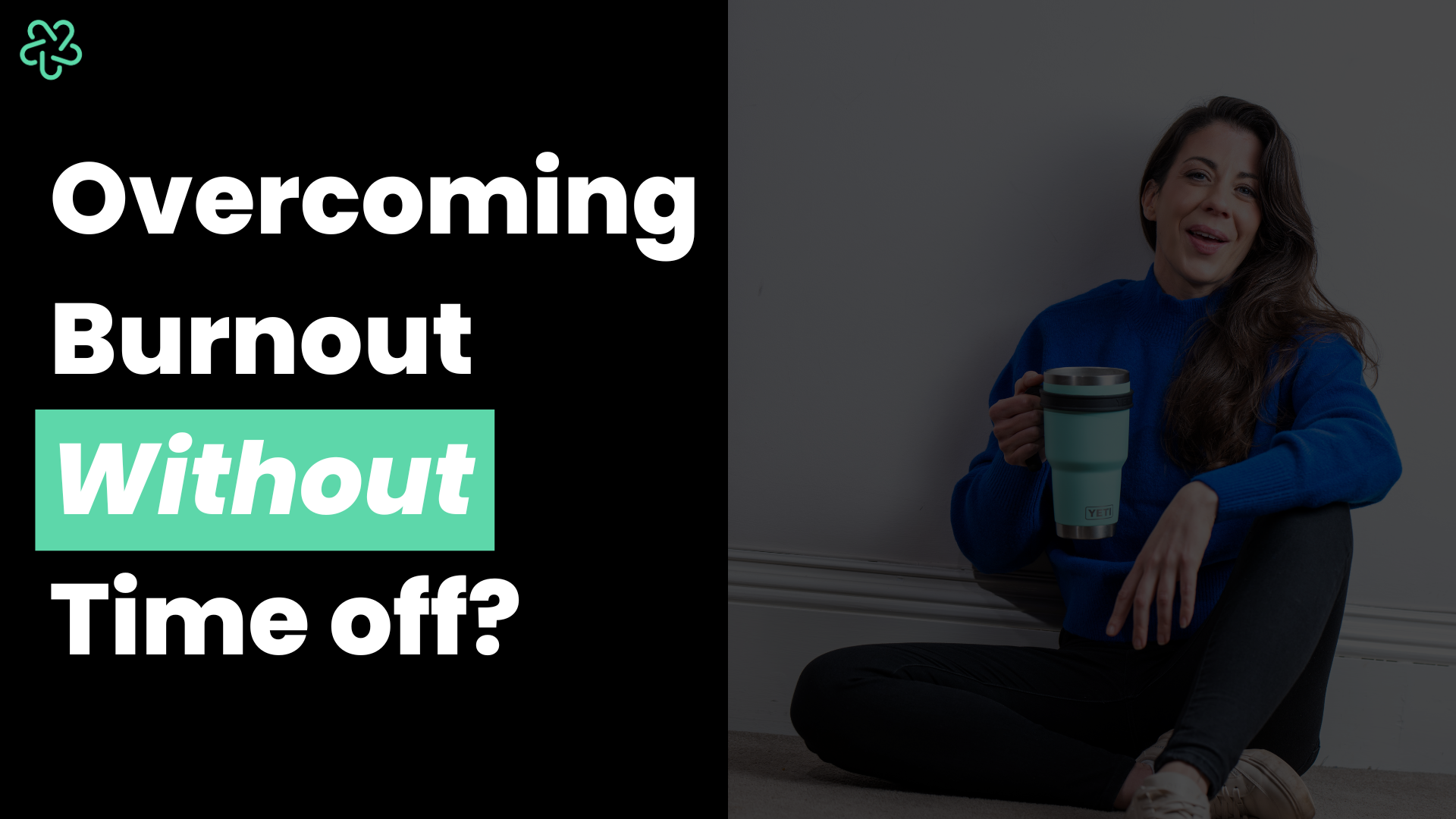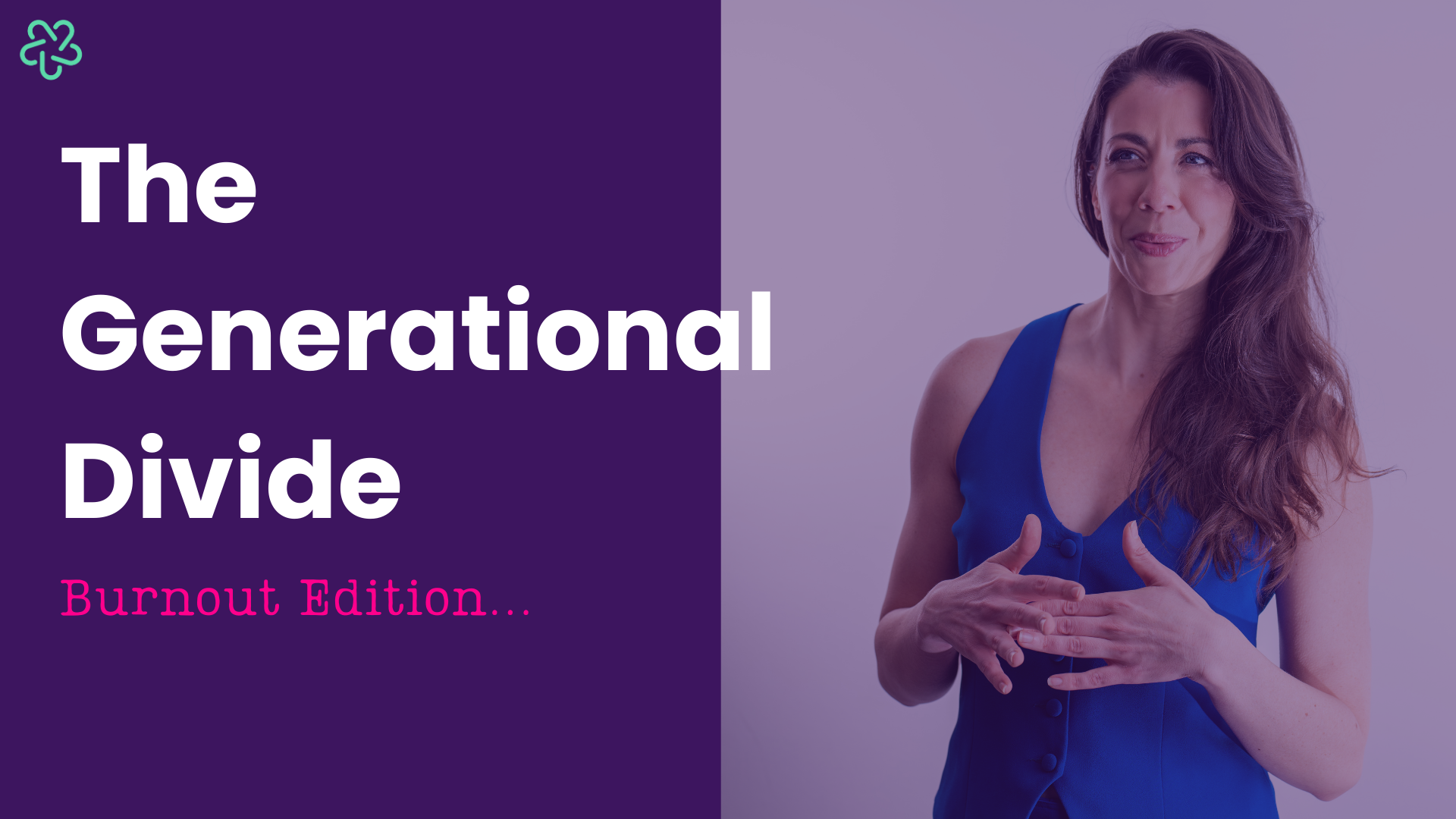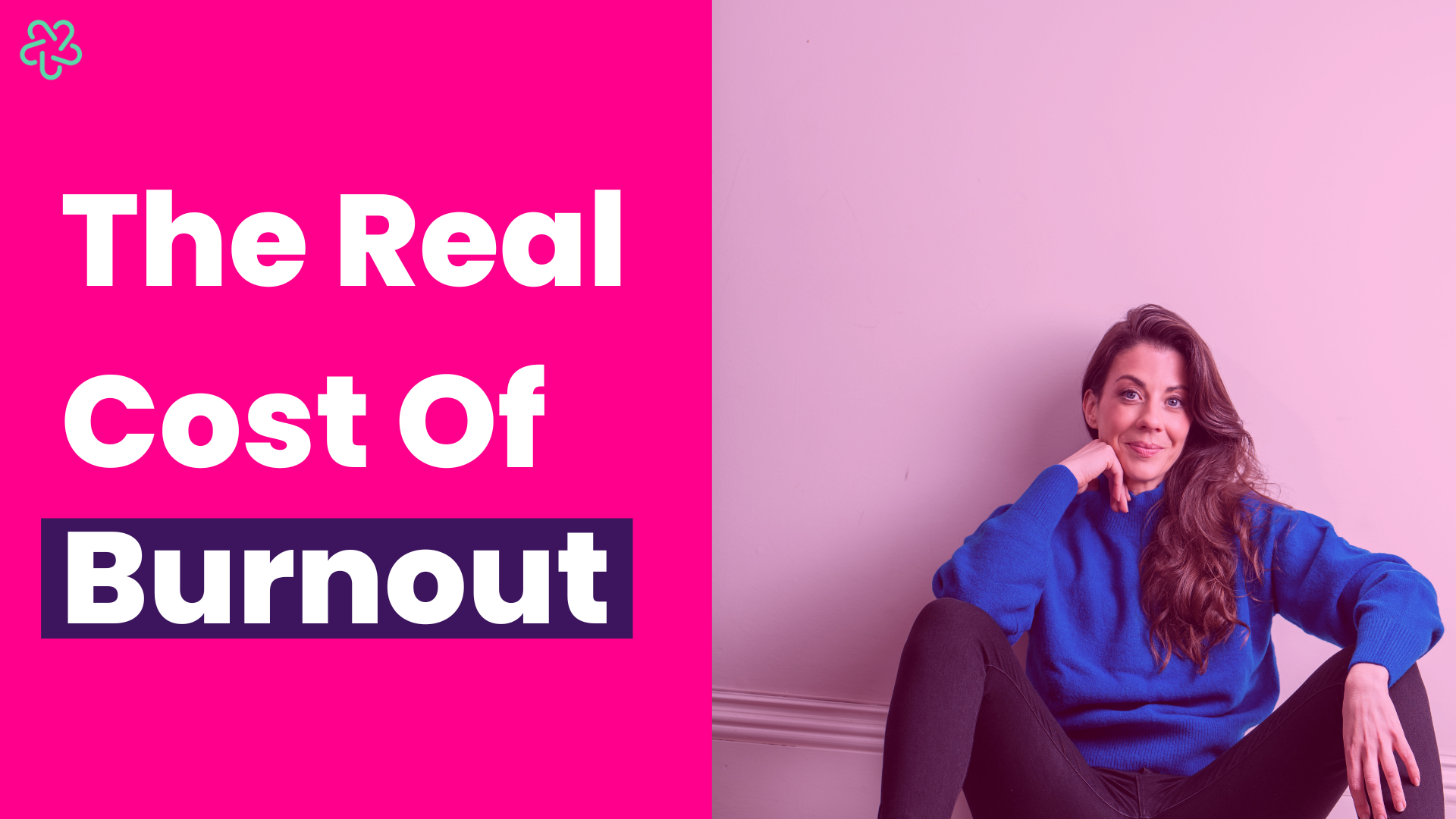Okay, this is a tough one.
Most of my clients aren’t usually in a position where they can take time off—not just because of their personal situation, but also because of where the business is at.
When we look at the number of people feeling burnt out OR stressed out, it’s impacting their health and performance, and we’re at boiling point.
The conventional way to overcome burnout is to take a few months off (at minimum) to physically heal, create space to manage stress more effectively, and better understand what needs to change.
However, with 80% of the workforce now feeling burnt out (Mental Health UK), many people will not be able to take that time off.
We can all agree that if 80% of the workforce were signed off for at least three months, we’d be in a national crisis.
However, because of its detrimental effects (if you haven’t read The Real Cost of Burnout, do so [here]!), many people and workplaces are vulnerable.
If you’re curious if you’re in the 80%, get Your Burnout Score here (but make sure you come back to read the rest!)
What Can Companies Do?
Let’s not beat around the bush—this requires dual responsibility.
Step 1: Get a Lay of the Land
Look at the latest surveys to understand your company’s current position on burnout:
- How many employees are suffering?
- Which departments are most affected?
- What are the leading causes?
One of the worst things companies do is make assumptions about the cause of burnout and take the wrong action. Or, they fall into the “band-aid” trap—implementing trendy well-being initiatives instead of addressing root causes.
Step 2: Identify & Fix What You Can
Burnout is multifaceted, and its causes can vary. But common culprits include:
- Workload demands
- Toxic environments
- Poor communication
- Lack of clarity in expectations
Can you fix everything at once? Of course not.
Prioritize the biggest issue first, based on available resources. Even fixing one of these can make a huge difference.
Step 3: Encourage Employees to Switch Off
With technology keeping us constantly connected, many employees struggle to disconnect. Companies should actively encourage work-life boundaries:
- Schedule emails appropriately – Encourage managers to schedule emails within working hours instead of sending them at night.
- Turn off notifications – Employees should be encouraged to mute notifications during downtime, holidays, and weekends.
- Lead by example – Managers should model healthy work-life balance, as some of the most burnt-out individuals are leaders and HR professionals.
But let’s be real, businesses aren’t solely responsible for fixing burnout.
What Can Individuals Do?
Fix Your Sleep
Yeah, yeah, I know. If you’re stressed, sleep can be difficult.
However, burnout is physical, mental, and emotional exhaustion. And guess what supports all three?
If you didn’t guess sleep, then I don’t know what to tell you!
Sleep Tips for Burnout:
- Aim for 7-9 hours of quality sleep
- Stick to a consistent routine (same bedtime and wake-up time)
- Avoid alcohol before bed
- Limit caffeine at least 10 hours before sleep
- Get outside during the day to regulate your circadian rhythm
- Reduce artificial light exposure (limit TV, phone, tablet use at least one hour before bed)
- Ensure enough time between work and sleep to unwind
Simple? Sure. But consistency is key.
Regulate Your Response to Stress
Try the ABCD method to manage stress effectively:
- Acknowledge your thoughts, feelings, and emotions. Viewing them from a third-person perspective reduces reactivity.
- Breathe. (I know, annoying advice, but trust me—breathing exercises shift your body from stress mode to calm mode.)
- Consider what’s actually causing the stress. Identify the root cause.
- Decide what you CAN do. Focus on what’s in your control instead of ruminating on what isn’t.
Enforce Boundaries
This is a game-changer.
Many professionals feel pressured to work outside of their contracted hours, and it’s taking a huge toll on their health, relationships, and mental well-being.
How to Set Stronger Boundaries:
- Signal the end of your workday – Go for a walk, hit the gym, or call a friend.
- Switch off notifications – Most phones allow you to schedule Do Not Disturb hours.
Accept that you won’t finish everything – Your to-do list will never be completely done, and that’s okay.
Final Thoughts
Burnout affects high-achievers, Type A professionals, and workaholics the most.
If that sounds like you, listen up.
You don’t need to completely overhaul your life to recover from burnout. Small, consistent changes can make the biggest impact.
Or, if you’re looking for more support, check out my related post: [The Real Cost of Burnout].
You’ve got this!
What next?
April is Stress Awareness Month, and it’s the perfect time to start having those tough conversations about burnout.
Not sure where to start? Check out the different talks and workshops we offer, or feel free to set up a chat with us here. Let’s work together to tackle stress and burnout head-on!



